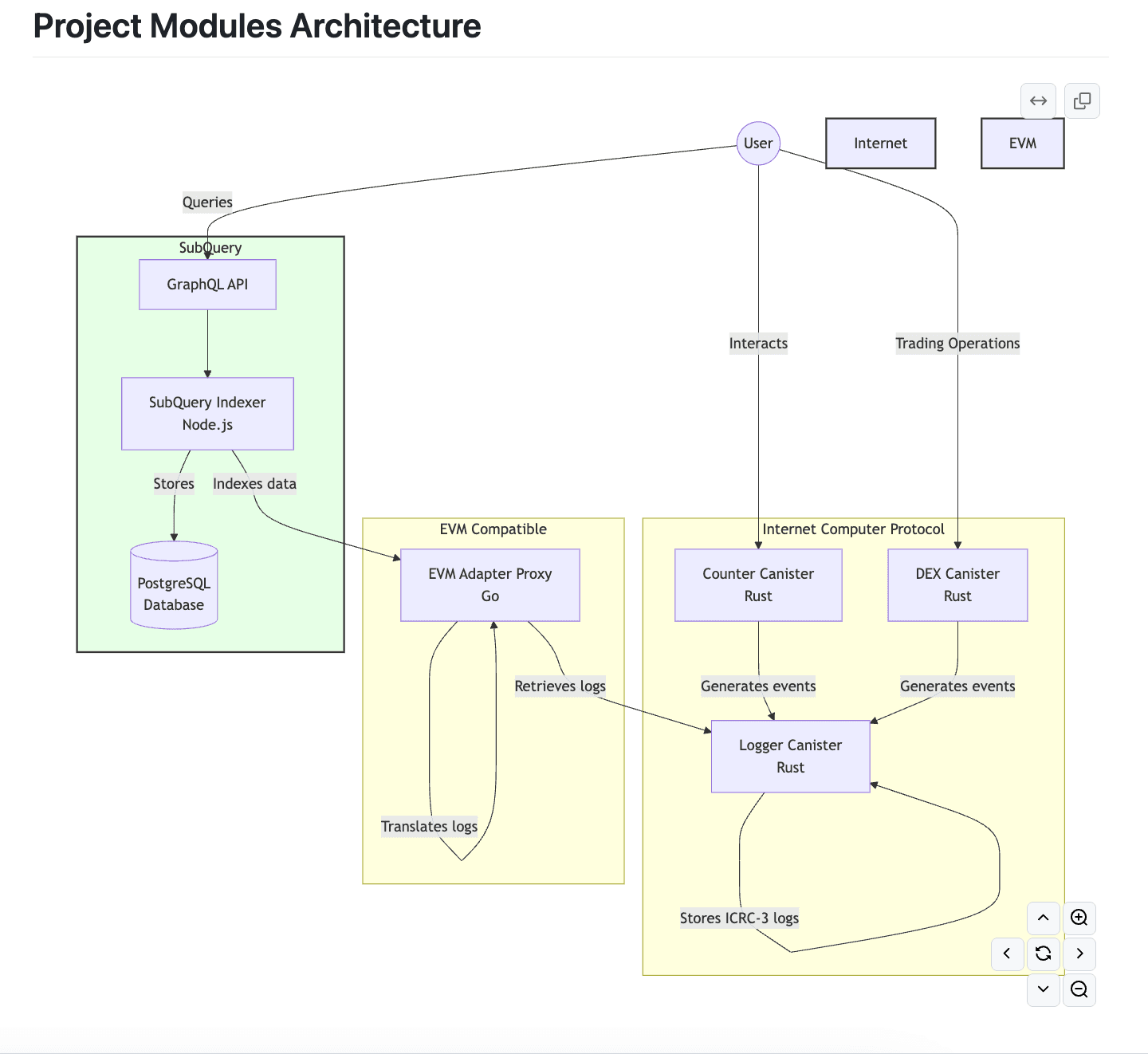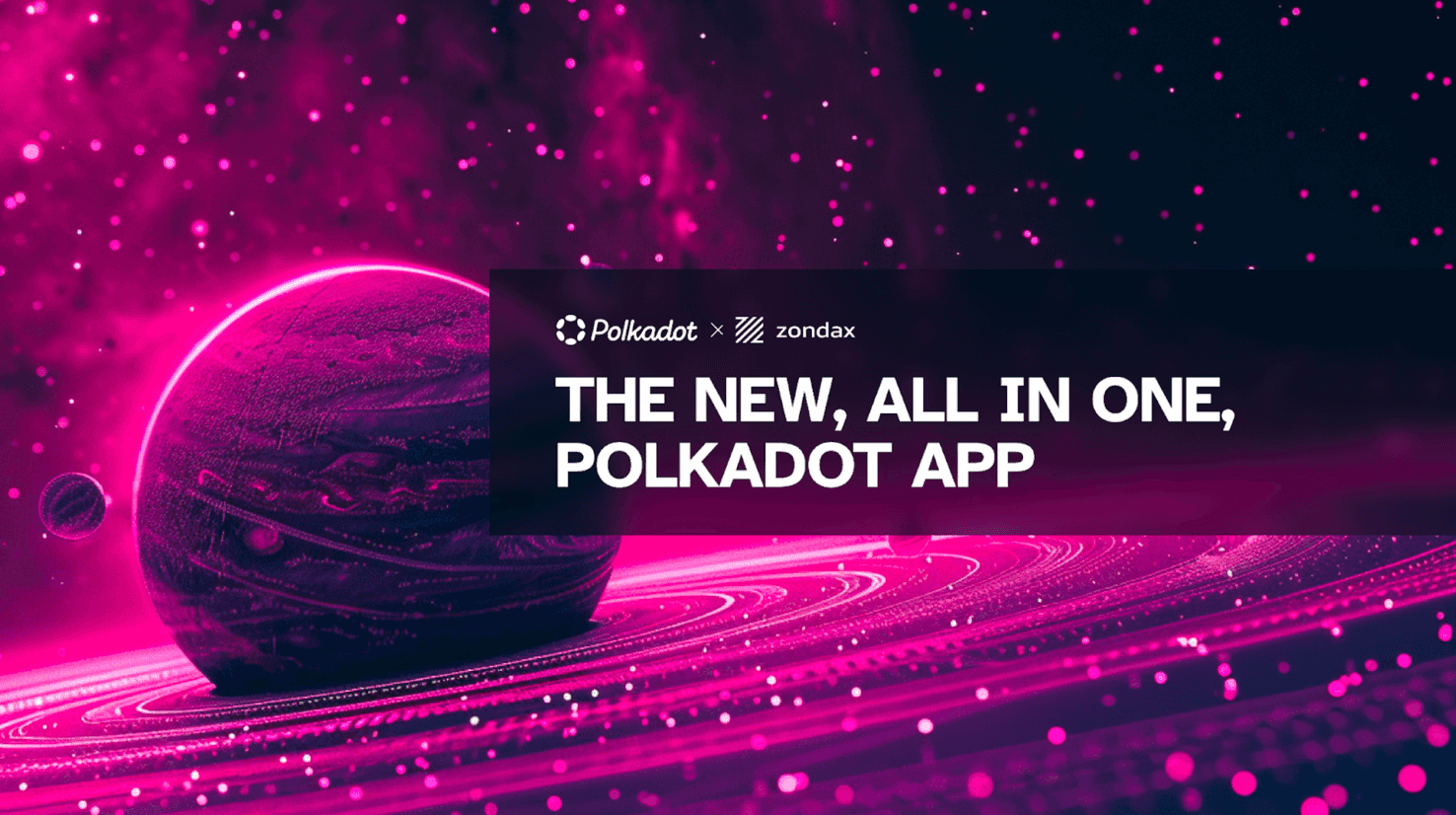Bridging the Gap: A Guide to the ICP-EVM Proxy
February 7, 2025
–
3 min read
The ICP-EVM Proxy is a PoC bridging ICP and Ethereum ecosystems. It translates ICP canister data into Ethereum-compatible formats, enabling cross-chain interaction and use of tools. Opeing doors for cross-chain dApps and simplified on-chain event tracking.

Ever wished you could seamlessly blend the power of the Internet Computer with the Ethereum ecosystem? We get it. Blockchain interoperability is a huge challenge, but it's also where some of the most exciting innovation happens. That's why we're glad to talk about the ICP-EVM Proxy, a proof-of-concept (PoC) that's paving the way for exactly that kind of cross-chain magic.
Why This Matters
Working across different blockchain platforms can feel like trying to speak a dozen different languages. The ICP-EVM Proxy acts as a translator, allowing ICP canisters to "talk" to Ethereum. Thanks to the translation of ICP canister data into Ethereum RPC methods, users can leverage familiar DEX tools like Dexscreener to analyze and interact with this data.. No need to completely rewrite your codebase or learn a whole new stack – that's a win for everyone.
Under the Hood: How the Magic Works
The ICP-EVM Proxy solves a real problem. It's built on a solid foundation of interconnected components:
The Counter Canister: A simple Rust-based canister that demonstrates core ICP functionality. Every action (like incrementing a counter) triggers an ICRC-3 event, giving you a clear way to track what's happening.
The DEX Canister: A mini decentralized exchange (DEX) built on ICP using Rust. It lets you create currency pairs, mint and burn tokens, and logs every transaction with ICRC-3 events. It's a great example of how to build DeFi applications on ICP.
The Logger Canister: This is the central hub for all event logs. It captures and stores the ICRC-3 logs from both the Counter and DEX Canisters, making it easy to access and analyze data.
The EVM Adapter Proxy: This is the real MVP. Written in Go, it bridges the gap between ICP and Ethereum. It grabs those ICRC-3 logs and translates them into a format Ethereum understands. It also exposes Ethereum RPC methods, allowing your Ethereum tools to seamlessly communicate with ICP.
The SubQuery Indexer: Built with Node.js, this service indexes and organizes all the EVM-compatible data. Thanks to its GraphQL API, querying blockchain events becomes incredibly simple. Think of it as your personal blockchain data librarian.

The Workflow: From ICP to Ethereum
Imagine a developer interacting with the DEX Canister, maybe minting some tokens. Here's what happens behind the scenes:
The DEX operation triggers an ICRC-3 log.
The Logger Canister stores this log.
The EVM Adapter Proxy picks up the log and translates it into an Ethereum-friendly event.
The SubQuery Indexer processes and indexes this data, making it available for querying via GraphQL.
Why Should You Care?
This PoC opens up a world of possibilities:
ICP dApps can integrate with existing Ethereum analytics tools.
Truly cross-chain applications become a reality.
Standardized logging makes on-chain event tracking a breeze.
What's Next?
This is a PoC, so there are some limitations:
Basic ICRC-3 logging and limited error handling are in place.
Throughput isn't optimized for production-level applications (yet!).
In-memory log storage isn't ideal for long-term data.
The DEX is still basic (no order matching, for example).
But don't let that discourage you! This is just the beginning. The ICP-EVM Proxy is a significant step towards a truly interconnected blockchain world. As the project matures, we can expect improvements in scalability, security, and performance. For more information on this and other developments visit our website, follow us on X, LinkedIn.
Read More
Polkadot Ledger Migration Assistant: Now Live
The Polkadot Ledger Migration Assistant offers a complete solution for migrating from legacy Ledger accounts to the new Polkadot generic app. With support for 17 networks users can safely transition their entire portfolio through one unified interface.
Experiencing LaBitConf: An evening of Crypto, and the Argentinian Community
LaBitConf set the stage for our side event with Filecoin Orbit at Crypster Club. Nearly 50 attendees enjoyed Web3 talks, games, and Argentine treats like fernet and medialunas. Insights from Filecoin and Zondax made it memorable.
The Polkadot Ledger Migration Assistant
The Polkadot Migration Assistant guides users through a smooth, step-by-step transition to the Universal Polkadot Ledger app.
Other Articles

February 7, 2025
The ICP-EVM Proxy is a PoC bridging ICP and Ethereum ecosystems. It translates ICP canister data into Ethereum-compatible formats, enabling cross-chain interaction and use of tools. Opeing doors for cross-chain dApps and simplified on-chain event tracking.

October 16, 2024
Interview with Ayelen Murano, front-end developer at Zondax, on Beryx's evolution from concept to its final milestone. Discover the journey behind the product's success.

Integration
July 1, 2024
The new Polkadot app streamlines runtime upgrades, minimizing disruptions. It unifies parachains and the relay chain, enhancing functionality and security for developers and users.
Interview with Ayelen Murano, front-end developer at Zondax, on Beryx's evolution from concept to its final milestone. Discover the journey behind the product's success.

Integration
The new Polkadot app streamlines runtime upgrades, minimizing disruptions. It unifies parachains and the relay chain, enhancing functionality and security for developers and users.
